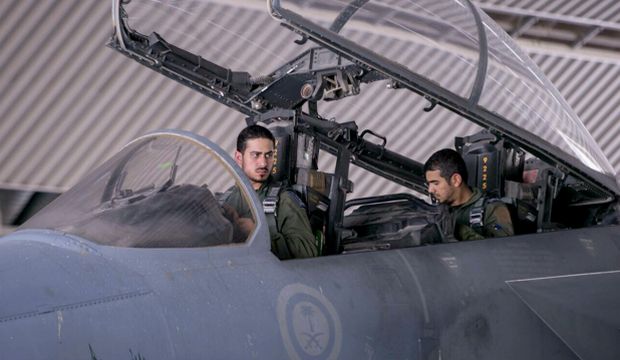Can a country be at war while at the same time seek to improve its growth, development and services? Or to put it another way: Can you hold the sword in one hand, and the pen and ruler in the other?
A well-established and stable state can do this, moving seamlessly between war and peace. This is precisely what the Kingdom of Saudi Arabia is doing today, along with its Arab allies in the regional coalition that has been formed to address the deteriorating situation in Yemen—the alliance hopes to rescue the country from de facto Iranian occupation at the hands of the Houthi rebels and supporters of ex-president Saleh. Egypt and the United Arab Emirates (UAE) in particular have shown a strong ability to find a balance amid this dichotomy.
There is a lot of talk about what is happening in Saudi Arabia’s southern neighbor, and we have heard many people warn Riyadh, and the Arab Gulf in general, against getting embroiled in a “war of attrition” in Yemen. Some people have said this out of fear for Saudi safety and security, while others—particularly those in the Iran-backed Lebanese media—have issued warnings in a different manner, almost gloating over the situation Riyadh now finds itself in.
But is this scenario likely? Could Saudi Arabia truly become embroiled in a long and punishing war of attrition in Yemen?
In my own view, this is certainly not what is happening now, and it is unlikely to happen in the future. Every conflict has its own specific nature, and what is happening in Yemen today cannot be compared with what has happened elsewhere. The mission in Yemen does not include ground forces; there is no attempt to impose territorial hegemony through boots on the ground, whether explicitly or implicitly. The objective in Yemen is to break the stranglehold of the Houthi-Saleh rebel alliance, and that is truly what is happening on the ground now.
We must recall the day that Houthi leader Abdul Malik Al-Houthi announced his so-called Constitutional Declaration—which in fact was nothing more than a coup—before Yemen’s military and security forces. Following this, we saw Yemen’s legitimate president Abd Rabbuh Mansur Hadi being placed under house arrest in the presidential palace in Sana’a, with Yemen’s people across the country being forced, whether they liked it or not, to accept this new reality. This was a new reality, by the way, that saw Yemen fall under proxy control of Tehran, which coincided with Iran signing a framework nuclear agreement with the West.
So should Saudi Arabia have stood idly by as these dangerous developments unfolded?
It is clear to see how the situation changed just days after Riyadh launched Operation Decisive Storm, with coalition warplanes flying across Yemen’s airspace and targeting the Houthi rebels, not to mention the naval blockade of Iranian ships. The region breathed a collective sigh of relief following the launch of this Saudi-led military intervention, while it also roused the ire of Iranian Supreme Leader Ayatollah Ali Khamenei and his Lebanese disciple, Hezbollah chief Hassan Nasrallah.
Iran’s influence in Yemen has been set back and must be destroyed, this is the most important thing, everything else is detail. This war was not an impulsive military adventure. The Saudi-led operation has been a complex, high-level joint venture. While it also goes beyond the military sphere; there are also political, humanitarian, media and even legal dimensions to this operation.
Patience, vision and decisiveness are needed to complete the task. Saudi Arabia is capable of striking the difficult balance between war and peace and emerging on top.
